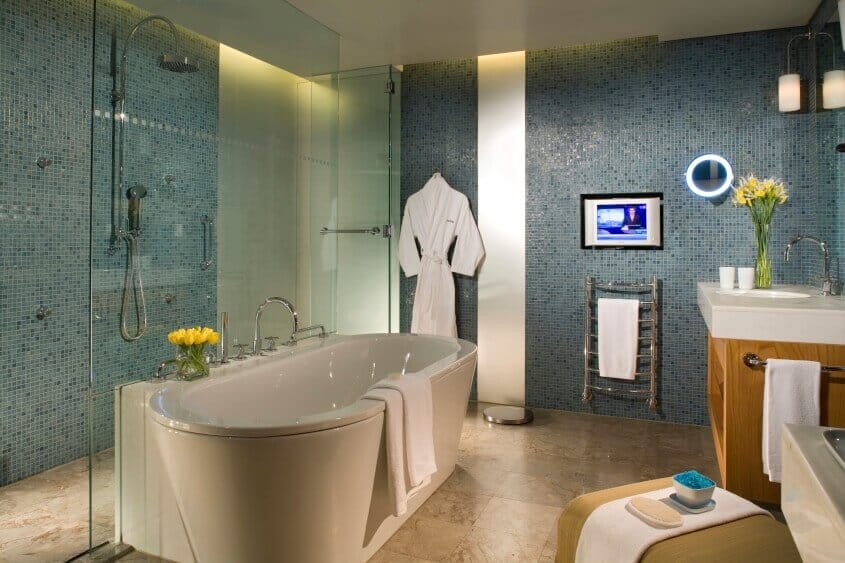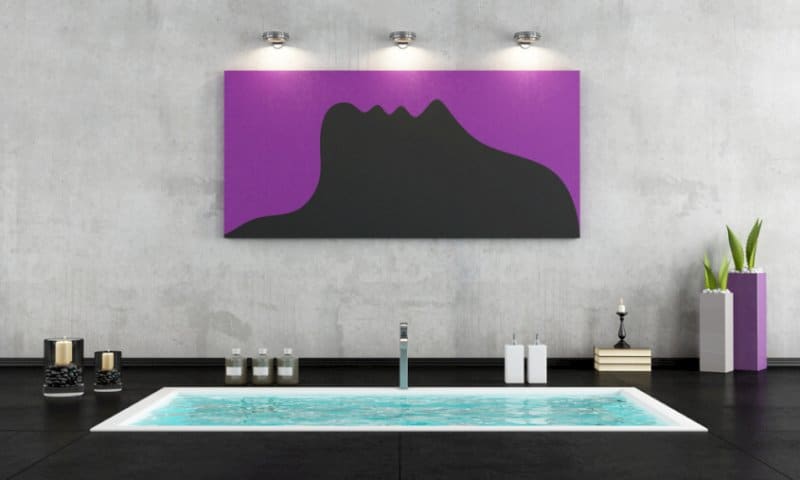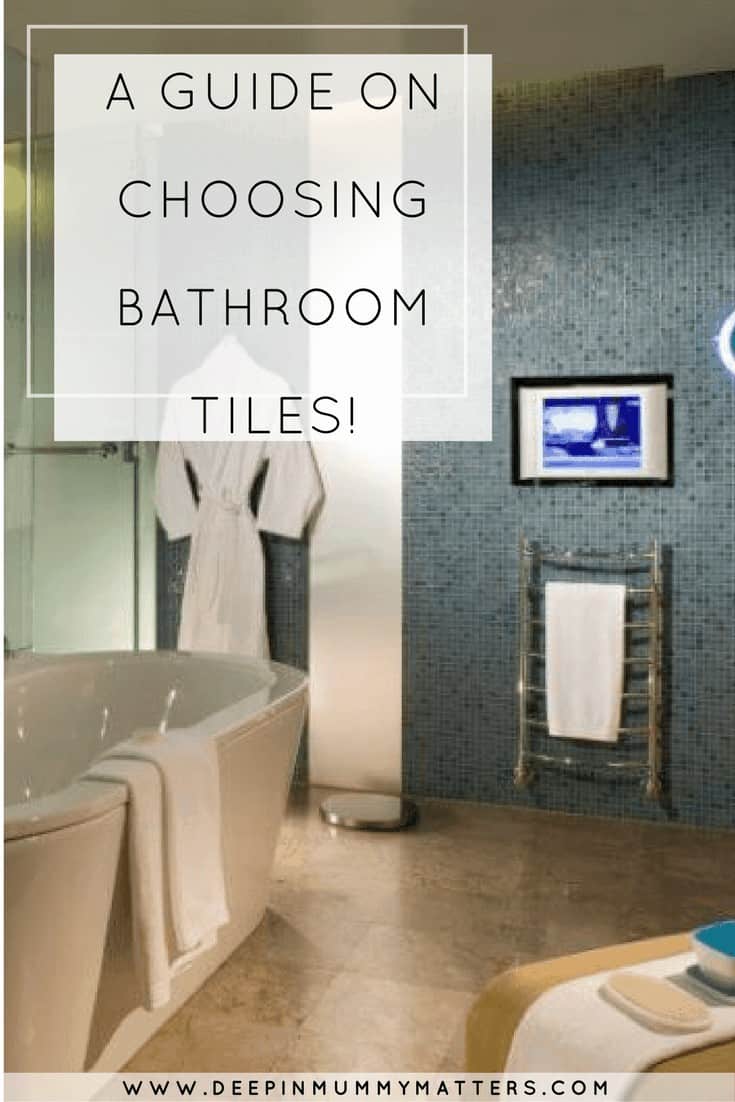After finishing our master bathroom not so long ago we’ve decided it’s time to revamp our en-suite and as a result, we’re on the hunt for potential tiles. This is my favourite part, of course, let loose on the internet, mood board galore – but it’s not always easy, especially when there’s so much to consider.

Size and placement of tiles:
Since our en-suite isn’t the same size as your regular bathroom it is important to choose tiles that are the right size for the room itself. If you can get hold of them then my advice is, ask for samples! That way you can have a real insight as to what the tile will look like in your bathroom and see how they will look with the lighting of the room – things always look much different online so don’t be deceived. There is a running theme with interior designers in which they tell you not to use large tiles in a small bathroom it will make the room appear even smaller, however, if you choose to use extra small tiles this can also pose as a bit of a problem too, as this will explode a lot of grout lines making the bathroom appear more box-like. To further avoid the room seeming small you can also use lighter tiles to help enhance and reflect any light that will make the room appear bigger than what it is. Aside from choosing a lighter colour, there’s also a hack on how to lay your tiles out to make your bathroom appear bigger, allow me to introduce ‘brick bond’. Although you may not know it by name, you’ll know it by appearance. Brick bond is simply the name for the stereotypical pattern in which bricks are laid. By having brick style tiles (especially light ones) you can emphasise the little space that you may have in an en-suite bathroom.
Choosing the right material:
Ceramic
The great thing about ceramic tiles is that you get plenty for your money, although they are one of the cheapest materials available their quality is second to none. Ceramic tiles are scratch resistant as well as being anti-skid/slip too, which makes them ideal for placing in the shower. As with most tiles, ceramic is easy to clean and maintain, whether they’re used on the floor or the wall – that’s entirely up to you. There is a lot of variety in the ceramic tile range, plenty of colours and designs for you to choose from; that’s if you can!
Porcelain
Porcelain tiles are made from natural clay but have a much denser nature than ceramic tiles, due to said density they are much less likely to absorb moisture which makes them ideal for a shower setting. As the tile is fired at a much higher temperature it is durable, the colour and design also run through the entire tile so if in the unlikely event a chip does occur the damage should be unnoticeable. Finally, due to their non-porous and easy to clean surface, Porcelain is one of the most hygienic options.
Natural Stone
I must admit, natural stone tiles weren’t my first choice for the bathroom, but after seeing the range available; they’re certainly a close contender! One of the key factors of natural stone tiles is their lifespan – which apparently, is a very long one. In my personal opinion, I think natural stone tiles bring a lovely warm vibe to the room, it’s pretty hard to make an en-suite cosier than it already is but I feel like this would!
Glass
I love the look of glass tiles, they’re so pretty! I have been doing a lot of research whilst hunting new tiles and I have found a bit of correlation between all the different types of tiles that I have spoken about, all being that they’re easy to clean and maintain – so you can imagine the turmoil in my head right now! One of the things I enjoy about glass tiles is their reflective properties and the way in which colour and light are reflected around a room because of them, they really can open up a room and create space. The only thing that puts me off is the stories I’ve seen when this type of tile hasn’t been installed properly and there has been a lot of problems afterwards.
When it comes to picking the material of your tile it’s hard not to feel like a kid at Christmas; there’s just so much to choose from! Again, it’s important to review the practicality of the material itself, don’t just base your decision on the aesthetic of the tile itself. So, which material is the most reliable to have in your bathroom?

What’s the difference between a glazed and unglazed tile?
Throughout my hunt for the perfect tile, I have seen ‘glazed’ and ‘unglazed’ used quite a lot and to be perfectly honest I wasn’t sure of what the differences actually were, so here’s another table to break down the properties of a glazed and unglazed tile.
| Glazed | Unglazed |
| Not as dense/thick | Denser & thicker |
| Not as slip-resistant | More slip-resistant |
| Shows scratches easier | Scratch-resistant |
| Non-porous topcoat means the tile is more resistant to stains | More vulnerable to stains |
So, with that being said it looks like I have a lot to consider before I make my final choice. Don’t worry though, I’ll be keeping you all updated with the renovation process and my final decision, so keep an eye out!

